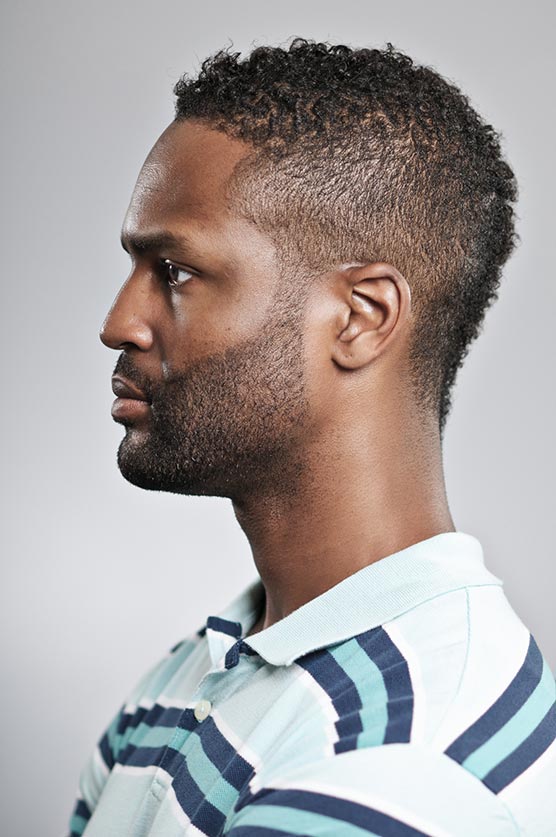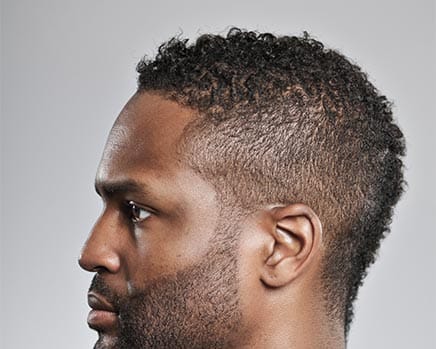Regardless of race or ethnicity, hair loss can be a major cause of frustration and embarrassment. While hair loss can occur for a variety of reasons, it’s particularly common among African Americans who have worn tight hairstyles like cornrows, braids, twists or dreadlocks for a prolonged period, triggering a condition known as traction alopecia.
The good news is that there are viable solutions that can help with hair restoration for African American patients—and we can help you find the right one for your personal situation.

What’s the best African American hair loss treatment?
There are two main options when considering hair loss treatments—hair restoration or hair transplant.
Hair restoration involves various non-surgical, minimally-invasive methods of treating hair loss including the use of oral and topical medication and therapy. Unfortunately, hair restoration proves ineffective for many patients. In cases where it is effective, the results aren’t permanent, with the patient requiring ongoing treatment.
Hair transplants provide a more permanent solution to hair loss, with the results potentially lasting a lifetime. Hair transplants are considered the gold-standard hair loss treatment for patients of any ethnicity, however, as it is a surgical solution, it does require the use of anesthetic and can result in some scarring.
NeoGraft vs FUE Hair Transplant: What’s the difference?
NeoGraft is an automated form of FUE. Using a device with a piston-driven motor which uses pneumatic pressure, individual hair grafts are harvested from the donor site, before being implanted into the desired area using a specialized tool which provides control over the depth of insertion.
Is NeoGraft better than FUE manual harvesting?
The benefit of opting for NeoGraft is that a greater number of graft transplants can be performed in a much shorter period of time, and without the need for any incisions or sutures. This means that excellent results can be achieved in a matter of hours rather than days.
However, there are some disadvantages. NeoGraft doesn’t provide the same level of precision and control as manual FUE. The automated suction action of the NeoGraft device can also damage some hair grafts, preventing the follicle harvest from being utilized to its full potential.
Punch size is another key difference between the two treatments. While a skilled and experienced surgeon performing manual FUE typically leaves a punch size between 0.7-0.8mm, NeoGraft leaves a slightly larger punch size of 0.9mm which can result in some visible scars.
The challenge with African American hair transplants
There are some unique features associated with African American hair that present additional challenges compared to other hair types. Not only do African Americans carry a higher risk of developing keloid scars, but they also tend to have a lower hair density which can make it difficult to source sufficient hair from the donor site to achieve a good result.
In addition, the typically curly nature of African American hair follicles can also make it difficult to perform a hair transplant for black males or females. Not only is there a greater likelihood of encountering ingrown hairs, but curly hair is also more susceptible to breakage, which can make the harvest process extremely difficult to perform without damaging the hair root.
Having said that, provided the harvest extraction can be performed successfully, curly hair can have its advantages as it makes it easier to create a fuller appearance with less hair follicles.
FUT or FUE hair transplant for African American hair: Which is better?
Patients have the option between two different hair transplant methods—Follicular Unit Transplantation (FUT) and Follicular Unit Extraction (FUE).
When using the FUT method, a large strip of scalp is removed from the back of the head, before the individual hair follicles are separated and relocated to the recipient site. While FUT is typically more affordable than FUE, the higher risk of keloid scars among African American patients generally makes it unsuitable.
In contrast, the FUE method doesn’t involve any large incisions. Instead, donor hair follicles are extracted individually (often manually) before transplantation. While the technique is more challenging to perform, it typically achieves far better results with very minimal scarring.
Choosing a hair transplant surgeon in Los Angeles
Because of the additional challenges of working with African American hair, it’s important to choose one of the top hair transplant surgeons for African American hair in Los Angeles, California to perform your treatment.
At Burbank Hair Transplant, we’ve developed specialized expertise in transplanting African American hair and can recommend the best hair restoration solution based on a personalized scalp analysis.
Request your free scalp analysis to find out how we can restore your hair.



